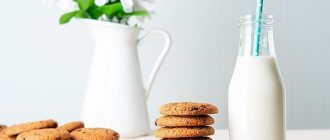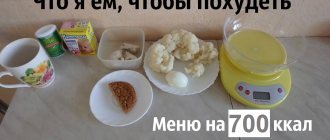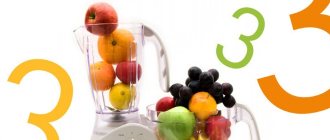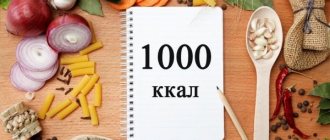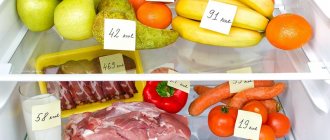Losing weight with a protein-free diet
The anti-protein diet does not allow you to lose a large number of kilograms. The basis of nutrition consists only of vegetable and fruit dishes. It is recommended to drink no more than one liter of water per day, as excess liquid has a detrimental effect on the kidneys.
A protein-free diet involves strict control of carbohydrate and fat intake. It is characterized by reduced energy value. Due to the refusal of protein foods, those losing weight have to take vitamins and monitor their condition with a doctor. It is necessary to avoid eating foods that stimulate the heart, blood circulation and central nervous system, as well as salt. About 2200 kcal should be consumed daily.
Following a protein-free diet for cancer
A protein-free diet for the prevention of cancer consists of a certain adherence to a diet based on vegetables and buckwheat porridge:
- buckwheat porridge in the amount of 200 grams, boiled in water for breakfast,
- snack with one apple or pear,
- boiled vegetables with a small piece of bread for lunch,
- boiled buckwheat with tomatoes for dinner no later than 18.00.
The above dietary restrictions can be observed only after agreement with the attending physician, since the treatment of cancer requires adherence to certain regimens under the supervision of qualified specialists.
Prohibited Products
There is a list of foods that are strictly prohibited to be consumed on a carbohydrate diet.
- flour products;
- animal fat, butter, margarine;
- milk;
- soups made from meat, fish or cheese;
- highly salted vegetables;
- pickles;
- beans;
- spicy vegetables;
- mushroom dishes;
- spicy seasonings;
- yolk;
- coloring drinks (including cocoa and coffee), sparkling water.
On the first day it is very difficult to give up this list of products, but soon lightness appears in the body, and the benefits of this diet begin to have a positive effect on the body.
What is a protein diet
Protein diet is the general name for types of nutrition based on protein foods. The diet consists of meat, fish, cottage cheese, eggs. Vegetables and fruits are consumed, but in smaller quantities, the same goes for cereals, soups and other foods rich in carbohydrates - the main source of energy. This way, the body doesn't get energy from food, so it replaces it with fat deposits, which you need to get rid of.
Protein food without carbohydrates is used by athletes when drying the body. With its help, excess fat is removed after gaining weight, but the muscles remain. During this time, the consumption of all nutrients, not just proteins, continues. Only their number and ratio changes. In this case, you will have to completely abandon confectionery products, flour dishes, potatoes, even in minimal portions.
What does a protein diet provide?
Meat, eggs, and fish rich in amino acids are considered “heavy foods,” so it’s easy to understand what a protein diet provides. The body spends a lot of energy digesting these foods with a molecular protein structure. First, food is “broken down” and becomes amino acid chains, and then - individual elements. This process requires a large amount of energy, which has to be extracted from fat deposits in the absence of other methods, breaking them down.
Long-term absorption of amino acids provides one important advantage of this type of diet - a feeling of fullness that lasts for several hours, so you are not afraid of hungry fainting and the constant desire to snack. Products on a protein diet for weight loss are not harmful, so you don’t have to worry about your health, and the variety of menu options with quick and long-lasting results does not leave girls indifferent. People who have problems with the kidneys, gastrointestinal tract, heart, and blood vessels will have to give up strict diets.
- Brine for cucumbers per 1 liter of water
- Folk remedies for hemorrhoids are the most effective. How to treat hemorrhoids with folk remedies in women and men
- Lytic mixture for children against fever. Composition and dosage of the lytic mixture in tablets and ampoules
Protein Diet Options
There are a huge number of types of protein nutrition, so the question “What can you eat on a protein diet?” - ambiguous. Scientists, nutritionists, stars around the world offer their menus. Choose the appropriate protein diet option not only according to the promised effectiveness, but also according to individual parameters: health status, tolerable foods for a protein diet, age.
You can follow diets based on timing, staple foods, and nutrient content. Below are the most famous power systems:
- The Dukan diet is a popular option from a famous nutritionist. It is based on the consumption of foods high in protein and a small amount of carbohydrates. Low-fat meats, fish and eggs fit this definition. The first phase is called “attack” with the use of exclusively protein, followed by a “cruise” with alternating pure protein days and protein-vegetable days. In order not to harm your health, the diet is followed for a week.
- The Maggi Diet is an egg diet based on a chemical reaction rather than a calorie deficit. It is designed for a month, during which you can lose up to 20 kilograms. The system is suitable even for older people and has no special contraindications, but to avoid health problems it is used maximum once a year. If you exit the diet correctly, the results will last for a long time.
- Kremlevskaya. Its principle is limited consumption of carbohydrates, but meat and eggs should not exceed the amount that was during the usual diet. The original system without new approved products lasts 2 weeks, and when it is extended, a person begins to have health problems.
Protein diet plan
If you have not decided on a clear menu of nutritional systems, create your own protein diet, following the following rules:
- number of meals per day – 4-5 times;
- the last dose 4 hours before bedtime, and the first 30 minutes after;
- each meal should contain protein products for weight loss;
- After lunch, limit your consumption of starchy vegetables;
- It’s better to eat fruit before lunch, for example, a couple of apples or citrus fruits;
- Avoid drinks with sugar substitutes because they stimulate your appetite;
- you need to drink at least 1.5 liters per day, and some nutrition systems require 2 times more water;
- Prohibited foods include bread, sweets, flour, sausages, sausage with other offal, fast food, canned food.
- Esmarch mug: use at home
- What does an immunologist treat - what diseases. Treatment of adults and children by an immunologist
- Pumpkin baked in the oven with honey: recipes
Diet products
It consists of a large number of carbohydrate products:
- bread without salt;
- yeast pancakes;
- fatty dairy product;
- any oils of vegetable origin;
- rice, buckwheat, pasta;
- vegetables;
- boiled onion;
- greenery;
- vegetable soups;
- fruits;
- berry products;
- weak tea and herbal infusions.
It is not recommended to eat a lot of sweets. You should allow yourself no more than once a day.
When is a protein-free diet prescribed?
The need to use a protein-restricted diet appears when the body cannot independently remove the products of protein metabolism.
Those who have chronic or acute kidney diseases, such as renal failure and glomerulonephritis, should limit the amount of protein in the daily menu. It is necessary to keep a daily calorie count
Instead of protein foods, you need to start eating foods of plant origin. On a protein-free diet, the daily intake of carbohydrates is 350 g, and fat - 80 g. The calorie content of the daily menu does not exceed 2200 kcal. If during the diet a person adheres to bed rest and strictly limits any physical activity, then the calorie content can be reduced to 2000 kcal.
In addition, the diet includes reducing fluid and salt intake. This is due to the need to prevent the formation of edema, which is one of the symptoms of many kidney diseases. In this case, you need to carefully monitor the amount of potassium in your diet. Mostly, patients take large doses of various diuretic drugs that flush potassium from the body, so the lack of this substance must be compensated with drugs or the right selection of products.
Prescribed when cancerous tumors are detected. Such a diet allows you to slow down the growth of the tumor and improve the condition of the body. But only with hyperuricemic nephropathy, which progresses against the background of leukemia and malignant lymphomas. In this case, protein products of animal origin are excluded, but protein is still present in the menu due to the increased consumption of soy isolates.
Some doctors support the erroneous opinion about the benefits of greatly reducing the amount of protein in the daily menu and suggest eating fruits and vegetables. However, this will only worsen the patient's well-being. Another mistake in the cancer diet is limiting the consumption of simple carbohydrates.
The tumor uses glucose for cell growth, creating a glucose deficiency. Because of this, gluconeogenesis develops, which accelerates the breakdown of proteins and fats in the body. This should not be allowed, so the diet should be balanced in both proteins and carbohydrates.
When on a diet, you should reduce your salt intake as much as possible.
Almost all foods intended for consumption while following a protein-free diet must be boiled or steamed. It is strictly prohibited to marinate or fry food. This diet is limited in salt content, so you need to prepare food without using it.
During the diet the following are allowed:
- Lean varieties of beef, turkey, chicken and veal. When preparing dishes, the product must first be boiled and then, if desired, baked in the oven.
- Low-fat sea and river fish (for example, pike, pike perch, cod, hake and pollock).
- Vegetarian soups (borscht, beet soup, zucchini soup), prepared in water or vegetable broth. They are prepared using cereals and some vegetables.
- Special protein-free bread.
- Vegetable side dishes from cabbage, cucumbers, boiled potatoes, beets, etc.
- One egg omelette, vegetable oils.
- Sago (a gluten- and protein-free product that comes from the sago palm). It is recommended to prepare porridges, casseroles, cutlets and meat balls from it.
- Fruits and berries. Patients with chronic renal failure need to constantly maintain potassium levels in the body. If the amount of potassium is limited, the berries must be boiled. Otherwise, they can be eaten raw.
- Milk and fermented milk products are allowed to be consumed up to 200 ml per day.
- Weak tea, natural fruit juices and rosehip infusion.
While following the diet, the following foods are limited:
- Some types of meat and fish, as well as any meat broth due to their high protein content.
- Alcoholic drinks.
- Sparkling water.
- Confectionery.
- Bread and other flour products.
- Legumes.
In case of development of liver cirrhosis, the following are prohibited:
- Chips.
- Nuts.
- Canned food.
- Sausages.
- Sauces.
- Cheese.
- Ketchup.
- Soup with unnatural broth, i.e. using bouillon cubes.
- Pickled foods.
You should avoid foods rich in protein.
For some kidney pathologies, your doctor may prohibit you from eating:
- Dried fruits.
- Chocolate.
- Fruit juices.
- Coffee.
- Beetroot.
- Powdered milk.
- Dried fruits.
- Soy products.
- Avocado.
- Ketchup and tomato sauce.
- Spinach, lentils, molasses, etc.
If it is necessary to reduce the level of phosphorus in the body, the following are prohibited:
- Legumes.
- Milk products.
- Any cereals.
- Nuts.
- Bran.
- Whole wheat bread.
- Cheese.
- Eggs.
- Cocoa.
This diet is therapeutic and unbalanced, therefore it is contraindicated:
- People who lead an active lifestyle or play sports professionally.
- Pregnant women (lack of protein negatively affects fetal development).
- Little children.
In addition, this diet is not recommended for completely healthy people. It is better to choose a different, more balanced diet for weight loss.
If you have kidney disease, which occurs in an acute or chronic form, you may want to consider whether it is worth eliminating certain foods from your diet. The reasons may be the following:
- If you need to reduce protein metabolism in the body.
- If you need to increase diuresis to eliminate edema.
- If it is necessary to increase the excretion of under-oxidized decomposition products.
- If you want to lower your blood pressure.
Typically, the diet should not exceed 2200 kilocalories. As for a bedridden patient, he should be even smaller. As you can see, it is precisely this limited nutrition that reduces weight. This can be done without limiting the consumption of proteins, which simply must be part of the daily diet. Fats in a protein-free diet reach eighty grams, and carbohydrates do not exceed four hundred grams.
- For breakfast, eat muesli with orange juice.
- For second breakfast, eat fresh berries.
- For lunch, eat vegetarian pilaf with dried fruits, and also add a vegetable salad.
- For an afternoon snack you need to eat nuts.
- For dinner, eat fruit salad.
We list the options when you cannot use a protein-free diet:
- When a woman is pregnant.
- When she breastfeeds the baby.
- For a child entering adolescence.
- In general, for children.
- To old people.
Let us list a number of obvious disorders in the body that will become noticeable when a person refuses to eat protein:
- The quality of the skin deteriorates.
- Hair becomes thin and brittle.
- A person gets tired quickly.
- Feels weak.
- His brain does not work well, in particular, it is difficult for him to remember.
Of course, you can take vitamins, but this complex will only help temporarily.
- Unsalted bread.
- Yeast unsalted pancakes and pancakes.
- Include sour cream, butter, milk, and dairy products in moderation, excluding cottage cheese and cottage cheese.
- I love any cereal.
- Any vegetables, both raw and stewed, even onions.
- Honey, jam, preserves.
- Any fresh fruit, except melons and watermelons.
- Potatoes, but only boiled ones.
- Drink jelly, compotes, eat jelly.
- You can prepare gravies from vegetables and fruits using butter and flour, just do not fry the product too much.
- Bread in any form, when salt and eggs are added, but do not exclude home-made bread without these ingredients.
- Avoid fish, meat, eggs, seafood, cheese, and cottage cheese.
- Do not eat radishes, daikon, radish, garlic, mustard.
- Eliminate dairy products.
- Do not eat any more cakes or any confectionery products.
- If the dish contains soda or baking powder, then discard it too.
- Say no to legumes, mushrooms, soy products, nagut, peas.
- Avoid chocolate, cocoa, coffee drinks, even those with chicory.
- Stop drinking coffee, especially three-in-one coffee, and don’t eat coffee or chocolate desserts.
- You will also have to eliminate soups made with milk, mushrooms, meat, and chicken, and no longer drink broths made with animal food.
- Do not eat nuts of any origin or seeds.
- Avoid strong black tea.
- Do not touch beef and lamb fat, lard, spreads, or cooking fats added to these products.
We invite you to familiarize yourself with the Pevzner dairy-free diet
To summarize, I would like to say that if there are no medical indications for refusing protein, then it should be eaten in reasonable quantities. Otherwise, the body will eat itself. Because he needs materials for construction. After all, our body renews itself every day, building muscles and creating new cells.
Exercising and following a protein-free diet is contraindicated!
What does such a name mean?
You must always remember that it is impossible to completely eliminate one of the important nutritional elements!
In order not to harm your body, you should adhere to the following rules:
- Protein is the basis of life! Such a vital element should not be completely excluded from the diet. The daily protein intake for an adult is 0.75 g per kilogram of weight. With such a diet, the optimal reduction is up to 0.55 g. Otherwise, your body will not be able to synthesize various amino acids.
- No physical activity. When protein intake is insufficient, the body begins to break down muscle structure to extract energy to support all systems. You should avoid intense sports activities.
- You need to reduce your consumption of water and salt. In case of renal failure, it is recommended to consume no more than 0.5-1 pure water without gas. Spices and salt should be completely excluded from the diet.
- Get rid of bad habits. No fatty, salty foods, flour or alcohol. Such habits can negatively affect the process of losing weight.
- Meals more than three times a day. To avoid feeling hungry, meals are divided into 5-6 meals. The bulk of calories should be consumed in the first half of the day. Last meal two hours before bedtime.
- Preparation. For three days we gradually remove protein from the diet.
- Main period. We follow the given program for a week.
- Smooth exit. Another week for the stomach to adapt to the previous food.
A similar menu can be used for a three-day or seven-day course for losing weight, no more. At first it is difficult to get used to different foods, but after a couple of days you will feel normal about the new diet. Patients with
sick kidneys
This regimen is often prescribed:
- Breakfast. 30 g of steamed oatmeal in water, a small piece of white bread, green tea with sugar.
- Lunch. Any fruits or vegetables.
- Dinner. Vegetable broth soup with cabbage salad, bread and a glass of juice;
- Afternoon snack. Two apples and an orange.
- Dinner. Fish cutlets with pasta or rice, tea with cookies.
- Before going to bed, drink a glass of milk.
This diet is aimed at normalizing blood sugar levels. It is recommended to use it no more than once a month. We exclude eggs, spices and sugar. The menu is as follows:
- cabbage salad or zucchini caviar with green tea;
- fresh cucumbers or tomatoes;
- cook pasta without spices, eat it with salad and unsweetened compote;
- light fruit salad;
- some white rice and grated beets.
Rules
This is a difficult type of nutrition, where you need to take into account some rules for quick and effective results. The menu contains:
- 350 grams of carbohydrates per day;
- 80 grams of fat;
- plant products - 1:4 part of the daily diet;
- 20 grams of protein;
- no more than 2 grams of salt.
It is also necessary to exclude hot sauces and seasonings from the diet. While following the diet, it is prohibited to engage in physical activity. Prolonged adherence to a protein-free diet is harmful to human health and well-being.
Recommendations for maintaining a protein diet: it is important to know the following
- Drink as much plain, clean water as possible. It cannot be replaced by teas and juices. A person, especially someone losing weight, needs to drink at least 2 liters of water per day.
- The vitamin complex will help the body cope with unusual restrictions.
- Five meals a day, if we are not talking about rapid weight loss. Dinner 3-4 hours before bedtime.
- The daily calorie intake is 1000-1200. How many calories are included in the dishes on your table can be easily determined using an online calorie counter on the Internet.
- Try to stick to the ratio of plant and animal protein in your diet in a ratio of 1:1 or 40% to 60%, respectively.
- It is advisable to limit the entire period to a maximum of two weeks.
- If possible, a carbohydrate-free table should be varied.
- Repetition is possible no earlier than after 6 months.
The usual snack in the form of sandwiches is prohibited. Bread should replace vegetables. By the way, they promote the breakdown of protein and its removal from the body.
Natural meat contains no more than 10-13% fat, which is why you need to give preference to simple food.
Sausage and semi-finished meat products contain a lot of salt, flavor enhancers, and spices, which whet the appetite, retain water in the body, causing swelling, and additional stress on the heart and kidneys.
Smoked products are harmful and dangerous, as they contain carcinogens - toxic substances. The calorie content of such products is higher.
Do not forget that food should be quite simple, without frills. And the norm for protein consumption for a healthy person leading an active lifestyle is 1.2-1.5 g per kg of weight per day.
- in the structure, formation, restoration of muscle tissue;
- immune protection;
- during transportation and storage of molecules, for example, hemoglobin;
- to maintain skin tone, healthy hair, nails;
- providing energy, etc.
We invite you to familiarize yourself with the Yogurt diet for weight loss
Some amino acids are called essential because they are not synthesized, but enter the body from outside. Namely from protein products.
It is also important to drink at least 1.5 liters of water per day and completely avoid alcohol and carbonated drinks.
Soups, if you are in the habit of eating the first one, are cooked without potatoes. It can be replaced with brown rice. Salads are seasoned with lemon juice, soy sauce, wine, balsamic vinegar with a spoon of olive oil. Mayonnaise can be replaced with Greek yogurt or kefir. A little mustard will add some piquancy to the dressing.
Protein diet recipes are as simple as possible and do not require much time to prepare. Here are some options for protein diet dishes:
- For breakfast - kefir, fermented baked milk, Greek yogurt, low-fat cottage cheese, cheese, 2 eggs.
- For lunch - veal, beef, white meat chicken, turkey, liver.
- For dinner - fish, seafood.
- Drinks include tea, coffee, herbal infusions without added sugar.
There are two different approaches to a protein diet:
- Fast protein diet. It involves a short period of 3-7 days and three meals a day.
- Fractional. Eating 5-6 times a day with an interval of 2.5 - 3 hours. Its duration is 7-14 days.
By observing the serving size and the daily amount of calories, you can stick to a protein diet for no more than a month, and then only in exceptional cases, because mono-diets pose a lot of stress to the body.
Losing up to 5 extra pounds in just 3 days is real. If there is an urgent need, relying on moral and volitional qualities, you can achieve your goal. But will this end justify the means? How does the body react to obvious stress? Is it worth risking your health?
Definitely not if you have serious illnesses, or the nutritionist believes that you are not ready for this option. You can always choose another equally effective, but gentle diet.
Remember the most important rules:
- fractional meals;
- no snacking;
- drinking plenty of water;
- ban on physical activity;
- well-being control;
- slow exit from the diet.
A protein diet is great for quick weight loss, as well as during active training.
The main condition for losing weight on a high-protein diet is to exclude fats and carbohydrates and choose foods with the highest protein content. Distribute 5-6 meals evenly throughout the day so that your last meal is 3 hours before bedtime.
A detailed list of recommended recipes is described in detail in this article. It can be supplemented and replaced with your favorite homemade dishes from the acceptable list of products.
The weekly diet is suitable for athletes because it allows you to effectively lose excess weight. In this case, the sports regime is not disrupted, and the growth of muscle mass will not stop if this is the goal of training. In a week you can lose from 3 to 5 kg.
If you have chosen a long-term protein diet, the menu for 14 days should include foods rich in proteins and microelements. Supplement it with a multivitamin complex, and do not forget about physical activity.
This scheme is considered long-term, so it will take several more days to get out of it. Try to stick to proper nutrition for as long as possible, refrain from going to fast food restaurants with your favorite fries and hamburgers.
You need good reasons for a month-long protein diet for weight loss. A high percentage of protein in the diet can lead to imbalances in digestion and metabolism.
Of course, body fat will noticeably disappear, but along with this, fatigue, drowsiness, irritability and other unpleasant sensations may appear.
Most enzymes responsible for chemical reactions in the body are ordinary protein molecules.
Protein-free diet menu for a week
The anti-protein diet contains many foods that can be used to prepare delicious, healthy and nutritious meals. If you know how to cook, a protein-free diet provides a varied menu for weight loss.
| Day of the week | Breakfast | Dinner | Dinner |
| Mon | Curd mixture, oatmeal, bread with strawberry jam | Macaroni with grated cheese, milk sausages | Stewed vegetables, bread or toast |
| W | Strawberries and cream, tea or infusion | Millet with raisins and dried apricots, a glass of orange juice | Processed cheese, a piece of rye bread, dairy products (yogurt or kefir) |
| Wed | Milk porridge with jam, tea with a slice of lemon | Stewed vegetables, apple compote | Lean fish cutlets |
| Thu | Buckwheat, a glass of kefir | Raw vegetable salad | Fruit salad, glass of yogurt |
| Fri | Toast, weak tea | Millet, weak tea | Oatmeal, a glass of kefir |
| Sat | Vegetable salad, a glass of any permitted dairy product | Rice, lean fish cutlets | Boiled chicken, tomatoes |
| Sun | Grated carrots, apple compote | Oatmeal, a glass of kefir | Fruits, tea |
In the first two days you need to eat only vegetables that are not subject to heat treatment. On the third day you can already eat raw vegetables, apples and pears. The next day, boiled or steamed food is allowed. In the next two days, vegetables, fruits with sour cream and yogurt are allowed. On the last day of the week, only vegetables and herbs are allowed.
Thanks to a weekly menu of a protein-free diet, it is almost impossible to lose unnecessary weight, but with its help you can improve your well-being and cleanse your body. When creating your own weekly menu for a protein-free diet for weight loss, it is advisable to use the table.
Protein diet: menu for 7 days
If you decide to try how the protein diet works, this sample meal plan will help you create your daily diet.
Day 1
- Breakfast: 150 g of low-fat cottage cheese or brown rice with vegetables and chicken, tea or coffee.
- Snack: 1 apple.
- Lunch: 150 g boiled chicken breast or vegetable broth, 1 slice of whole grain bread.
- Afternoon snack: 100 g Greek yogurt.
- Dinner: 200 g of steamed fish or poultry, vegetable salad.
Day 2
- Breakfast: 150 g of unsweetened yogurt or chicken omelette, tea or coffee.
- Snack: 1 orange or 2 unsweetened cheesecakes.
- Lunch: 150 g of beef or turkey, stewed vegetables.
- Afternoon snack: a glass of kefir or yogurt without additives.
- Dinner: 200 g of baked fish or lamb, 100 g of fresh vegetables.
Day 3
- Breakfast: 3 egg whites or 150 g of cottage cheese, coffee or tea.
- Snack: 1 fruit, except banana.
- Lunch: 200 g turkey, 4-6 tbsp. l. boiled brown rice or meat soup.
- Afternoon snack: unsweetened curd cheese or apple.
- Dinner: 150 g beef, 100 g cabbage salad.
Protein-free diet for pregnant women
Protein-free nutrition can worsen the health of the baby and the expectant mother. With such a diet, the risk of developing autism in a child increases sharply. Before including only protein-free foods in your diet, you should consult a specialist. If the protein content of an infant is high, his mother is usually prescribed to follow an anti-protein diet for one week.
Andreas Moritz and his magic diet
Physician Andreas Moritz researched a method for clearing stones from certain organs. It consists of several stages.
- Preparatory. Fried, dairy, salty and meat products are removed from the diet. For 6 days you need to drink one liter of natural apple juice through a small straw.
- Basic. Then all meals are taken until two o'clock in the afternoon. You can only eat fruits and cereals. At six o'clock in the evening prepare a solution of 600 ml of water and 4 tbsp. l. Epsom salts ml, 100 ml of which you need to drink, and use the remaining liquid to brush your teeth. At eight in the evening, drink 100 ml of saline solution. At ten in the evening, mix half a glass of olive oil with 150 ml of citrus juice, drink the resulting mixture and take a lying position, because stones should already begin to come out. At six o'clock in the morning, drink half a glass of saline solution. At eight o'clock in the morning, drink the remaining liquid. At ten o'clock in the morning, drink a glass of juice.
This treatment can be carried out 1-3 times a month, but before this, a consultation with a therapist or urologist is necessary.
Recipes
According to reviews from those who have lost weight, using a protein-free diet can help you eat healthy and tasty. All dishes are prepared from commonly available ingredients.
Vegetable stew
Ingredients.
- zucchini - 0.5 kg;
- medium-sized tomatoes - 3 pieces;
- medium-sized pepper - 2 pieces;
- vegetable oil - 2 tbsp. l.
Peel the tomatoes and grind them in a blender. The pepper is peeled from seeds, membranes and cut into cubes. Zucchini is peeled from seeds and cut into cubes. Vegetable oil is poured into a frying pan and heated. Add zucchini and pepper and fry for 5-7 minutes. Add water to the pan and simmer for 7-10 minutes. Add tomatoes and stir thoroughly. Simmer for 10 minutes. Remove the pan from the heat and leave covered for 20 minutes.
Milk porridge with jam
Ingredients.
- milk - 400–500 ml;
- cereal - 100–200 g;
- salt;
- sugar;
- oil;
- jam - 1 tbsp. l.
Milk and water are poured into a saucepan and heated to a boil. Add cereal, a little salt and sugar to the pan. Cover the pan with a lid and cook for 20–25 minutes, stirring regularly. Remove the porridge from the stove, take the required portion and add butter and jam to it.
Pilaf
Ingredients.
- one small or two small carrots;
- onion - 1 pc.;
- vegetable oil - 2 tbsp. l.;
- canned corn - 1 can;
- tomato paste - 2-3 tbsp. l.;
- steamed rice - 2.5 cups.
Grate the carrots on a coarse grater and cut the onion into half rings. Place oil in a cauldron or frying pan, add vegetables and simmer for 5 minutes. Then corn is added to the cauldron (frying pan), stirred and tomato paste is added. Then, after 5 minutes, add rice and pour boiling water until the rice is completely submerged. When the mixture boils, reduce the heat and simmer for half an hour.
Thursday
Breakfast
Scrambled eggs with spinach
Calories: 106 Protein: 6 Fat: 8 Carbohydrates: 2
Boil 200 g of chopped spinach leaves in water for one minute. Rinse with cold water and chop finely. Add two tablespoons of cottage cheese, one tablespoon of pre-melted butter and 100 ml of milk. Salt and pepper to taste. Grease a baking dish with butter, add spinach, pour two eggs and salt. Add another 100 ml milk. Bake in the oven at 180 degrees for 18 - 20 minutes.
Dinner
Healthy ice cream
Calories: Proteins: Fats: Carbohydrates:
Sticking to any diet, including protein, can be difficult. We diversify the menu with an unusual delicacy - it is not only tasty and healthy, but also filling. Mix 200 g of soft cottage cheese with chopped apple, place in a freezer form and place in the freezer for several hours.
Snack
Whole grain bread with cheese
Dinner
Chicken roll in foil
Calories: 124 Protein: 18 Fat: 5 Carbohydrates: 1
Beat one egg, 200 ml milk and a pinch of salt. Bake a pancake. Cut 200 g of mushrooms into slices and simmer for 5 minutes. Beat the chicken fillet, sprinkle with your favorite spices. Place the pancake on it, then the mushrooms and grated cheese. Roll the roll, wrap it in foil and bake for half an hour in the oven at 200 degrees.
Reviews about the protein-free diet
A protein-free diet is not suitable for weight loss - this is what many reviews on the World Wide Web say. In a couple of weeks you can lose only 2-4 kg. It helps cleanse the body and improve health. But you can follow the diet for no more than two weeks.
The diet has virtually no results in losing weight—this is confirmed by most reviews on the forums. Many claim that the weight lost comes back threefold. The effectiveness of this diet is questionable, because it is not balanced according to any nutritional criterion. This diet is only suitable for people with certain diseases and contraindications.
Before going on any diet, you need to consult a specialist! The article is for informational purposes only and contains only general recommendations that are not suitable for everyone.
Side effects and contraindications
People who are at risk for diseases of the genitourinary system, cardiovascular diseases or who have liver problems should not go on a protein diet. With an illiterate approach, a protein diet can cause the appearance of kidney stones, the development of thrombosis, and an irritable state.
Attention! If you have any chronic diseases, we strongly recommend that you first consult with your doctor.





